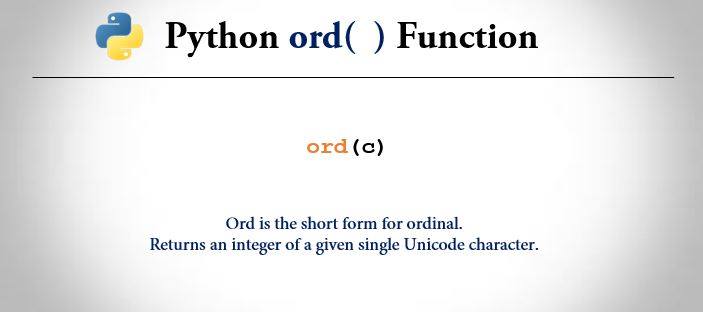Python ord() is a built-in function that returns an integer of a given single Unicode character. ord() is the short form for ordinal. The returned integer represents the Unicode code point.

Python ord() Syntax
ord(c)The ord() method takes a single parameter as argument.
- c (required) – character of length 1 whose Unicode point is to be found
Python ord() is the inverse of chr() for 8-bit strings and of unichr() for Unicode objects. If a Unicode argument is given then the character’s code point must be in the range 0 to 65535 otherwise, a TypeError will be raised as the length of string becomes two.
Python ord() Example
>>> #Unicode code point of an integer
>>> print("The Unicode code point for 1 = " ,ord('1'))
The Unicode code point for 1 = 49
>>> #Unicode code point of a character
>>> print("The Unicode code point for A = " ,ord('A'))
The Unicode code point for A = 65
As you can see in above example, Python ord() works for a single character. Now when we pass two characters as an argument to ord() function, a TypeError will be raised.
Here is the example.
>>> #ord() function for multiple characters
>>> ord('XY')
File "<pyshell#9>", line 1, in <module>
ord('XY')
TypeError: ord() expected a character, but string of length 2 found
Python ord() Example : Return Unicode code point value of a user input
py_var = input("Enter a character:")
py_codepoint = ord(py_var)
print("The Unicode code point of the character",py_var ,"=" ,py_codepoint)
Above program will yield following output.
Enter a character:#
The Unicode code point of the character # = 35